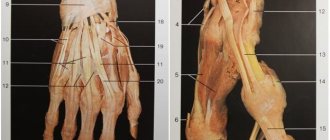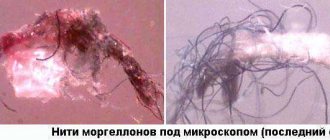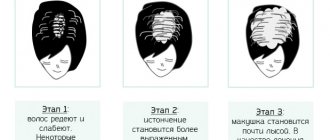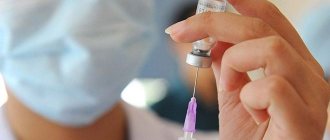One of the most dangerous and unpredictable infections at the moment is meningococcal infection, which is spreading through the population with alarming speed and causing problems. Even modern medicine is sometimes unable to cope with them fully.
We do not set a goal to scare the reader, but our task will be to talk about this disease and show that it is possible and necessary to fight it, and one of the main points will be prevention. However, everything is in order.
Meningococcal infection in children is an acute disease of an infectious nature, characterized by a variety of manifestations and occurring in the form of nasopharyngitis, manifestations of meningitis, meningococcemia.
- 2 Epidemiology
- 3 What forms of meningococcal infection exist?
- 4 Symptoms
- 5 Diagnostics
- 6 Treatment
- 7 Prevention
Pathogenesis of meningococcal infection
Meningococci can colonize the oropharynx and nasopharynx as asymptomatic carriers. A combination of risk factors likely causes the transition from carriage to disease. Despite the reported high rates of colonization, development of the disease occurs rarely and primarily in previously uninfected patients. Transmission usually occurs through direct close contact with the respiratory secretions of a carrier of a nasopharyngeal infection. Carriage rates increase sharply during epidemics.
When N. meningitidis infection is generalized, meningitis and severe bacteremia develop in children and adults, leading to deep vascular lesions. The infection can progress rapidly, with deaths occurring in 10-15% of cases. Of those patients who recover, 10-15% may develop serious complications such as permanent hearing loss, cognitive impairment, or loss of phalanges or limbs.
Risk factors. Children aged 6 months to 3 years are most often affected. Other risk groups include teenagers, conscripts into the armed forces, first-year students living in dormitories. Infection or vaccination provides type-specific immunity.
Complications
Meningococcemia, especially if treatment was started late, often leads to various negative health consequences.
Most likely complications:
- inflammation of the dura mater (meningococcal meningitis);
- infectious-toxic shock;
- general intoxication of the body;
- asthenic syndrome;
- hemiparesis (significant decrease in muscle strength of half the body);
- hearing problems;
- development of epilepsy (this is extremely unlikely, but theoretically possible, especially if treatment was started late).
Symptoms and signs of meningococcal infection
The most common clinical forms are the following.
Acute nasopharyngitis begins with low-grade fever, sometimes it rises to 38.5 C, pain when swallowing, sore throat, coughing, runny nose with mucopurulent discharge, nasal congestion. This form can become generalized.
Usually an acute, violent onset, temperature - 38.5-39.5 ° C, chills, exanthema on the 2-7th day, protruding above the skin level. In severe cases - cyanosis. After a few hours - a hemorrhagic - roseolous, papular rash may be irregular in shape, in the form of stars of various sizes. There may be gangrene of the ears and fingertips (heals slowly).
More often the rash is localized on the limbs, thighs, buttocks, torso, and in severe cases - on the face and eyelids. There may be mono- and polyarthritis.
In the fulminant form there is a rapid onset, increased temperature, meningeal sepsis with the Waterhouse-Friderichsen symptom complex (hemorrhages in the adrenal glands), profuse exanthema, extensive hemorrhage resembling cadaveric spots. The skin is cold, clammy, pointed features, cyanosis. Convulsions, agitation, loss of consciousness, temperature to normal. There may be meningeal symptoms.
Meningitis : acute onset, temperature - 39-40 °C. Chills. Excitement sometimes gives way to lethargy. Vomiting is profuse, not associated with food intake, repeated, does not bring relief against the background of increased headaches, delirium. Hyperesthesia, sharply expressed in response to light, touch, noise.
Prevalence of septicemia. Symptoms and signs of septicemia, shock, respiratory distress syndrome. They can progress from the first symptoms to death within a few hours. Purpura almost always occurs, but may be absent at the time of admission. In patients, the symptoms of meningism are often not identified. After taking blood for bacteriological examination, an antibiotic is immediately prescribed. An intensive care unit doctor is urgently called. Lumbar puncture and CT are not performed.
Prevalence of meningitis. There is no shock or respiratory distress syndrome. Neurological symptoms predominate, while rash may sometimes be absent.
Bacteremia without meningitis or sepsis. Nonspecific flu-like symptoms with or without rash. A positive blood culture result is usually unexpected. The rash is observed less frequently than with other forms of meningococcal infection. Dissemination of infection can lead to septic arthritis or pericarditis.
Chronic meningococcemia. Low-grade fever, purpura, arthritis are often confused with gonococcemia. The patient does not develop sepsis or meningitis, and the disease may last for many weeks until it is diagnosed.
Recurrent meningococcemia. Immune pathology, especially complement deficiency, should be suspected.
A maculopapular or hemorrhagic petechial rash often appears soon after the onset of the disease. Meningeal signs are detected during physical examination. Rapidly developing syndromes of meningococcemia include Waterhouse-Friderichsen syndrome, sepsis with multiple organ failure, and shock.
Stages of the disease
Like most infectious diseases, meningitis has four main stages: latent, onset, progression and resolution, but in some forms not all of them are expressed. For example, transient bacteremia is an asymptomatic form of meningococcemia, which has only one, latent stage, and is discovered by chance.
In other cases, the latent period is not visible, the disease has an acute onset.
The height of the stage in most cases ends with convalescence, or recovery. However, in severe generalized forms of the disease, such as Waterhouse-Friderichsen syndrome, the risk of death is high.
Diagnosis of meningococcal infection
- Method of bacterioscopy of Gram-stained smears, isolation of meningococcal culture and serological methods.
Neisseria are small, gram-negative cocci, quickly identified by gram staining. Serologic techniques such as latex agglutination and adhesion tests can confirm the diagnosis of N. meningitides by examining blood, CSF, synovial fluid, and urine. The PCR method for detecting N. meningitidis is being developed.
Diagnosis is carried out based on:
- medical history - acute, violent onset, fever, chills;
- epidemiological history - prolonged contact with a patient or bacteria carrier;
- complaints and clinical examination - headache, vomiting, photophobia, meningeal symptom of hyperesthesia (meningitis), hemorrhages under the skin, characteristic exanthema on the 1-2nd day on the buttocks, torso, arms, face;
- laboratory examination.
- serological methods of express diagnostics - ELISA, RPGA, RIGA, IEF, VIEF (counter immunoelectrophoresis);
- immunological - LA (latex agglutinon);
- PCR.
Differential diagnosis is carried out with napharyngitis of other origins, hemorrhagic vasculitis, influenza, meningitis of other etiology, typhus, measles, rubella, subarachnoid hemorrhages.
Treatment of meningococcal infection
- Ceftriaxone.
- Dexamethasone.
For immunocompetent adults suspected of having meningococcal disease, a cephalosporin plus vancomycin is prescribed. In patients >50 years of age, the possibility of Listeria monocytogenes should be taken into account when adding ampicillin.
Corticosteroids reduce the likelihood of developing neurological complications in children and adults. If corticosteroids are used, they should be given together with or before the first dose of antibiotics.
Laboratory and instrumental research methods
Bacteriological blood test. Perform immediately. They also take a blood sample with EDTA for PCR testing and a throat swab. OAK, concentration of urea and creatinine, glucose, liver function tests, coagulogram.
CT scan of the brain. Should be performed before lumbar puncture in case of depression of consciousness or the presence of neurological symptoms (Glasgow Coma Score <12 or unstable condition, focal symptoms, papilledema, seizures, bradycardia and hypertension), antibiotics are administered before CT. DO NOT POSTPONE TREATMENT! It is not performed in patients with predominant signs of septicemia, as this leads to a delay in the start of intensive care.
Lumbar puncture: is not performed in patients with a predominant clinical picture of septicemia (manipulation requires interruption of ongoing intensive care and can be dangerous in DIC syndrome). In general, all patients with suspected meningitis should undergo a CT scan of the brain before undergoing a lumbar puncture. However, this results in a delay in the initiation of adequate therapy, so recent British Infectious Diseases Society guidelines suggest that lumbar puncture may be performed without prior CT scanning in patients with meningitis without septicemia, depression of consciousness or focal neurological symptoms. Do NOT delay the administration of antibiotics for more than 30 minutes.
Differential diagnosis for purpura
Gonococcemia.
Bacterial septicemia with DIC syndrome.
Hematological disease accompanied by sepsis.
Henoch-Schönlein purpura.
Travelers may experience:
- viral hemorrhagic fevers.
Data from laboratory tests of cerebrospinal fluid in meningococcal infection
- Pressure. Often enlarged.
- Leukocytes. An increase of almost 100%: the average number is 1200 cells/μl, polymorphonuclear neutrophils predominate, but during treatment the cellular composition may be mixed.
- Protein. Increase in 90% of cases.
- Glucose. Decrease in 75-80% of cases.
- Gram staining. When microflora is detected in a smear, in 10-15% of cases the culture is negative.
- Sowing. Positive in 50-80% of patients with meningitis.
- Detection of pathogen antigen. Positive result in 50% of cases and correlates with the results of Gram staining of the smear.
Meningococcal infection: antibiotic therapy
If you suspect a meningococcal infection with a predominance of meningococcemia, treatment should begin immediately. If predominant meningitis without signs of septicemia is suspected, a lumbar puncture is performed in the absence of contraindications, but the administration of the antibiotic is not delayed for more than 30 minutes.
If antibiotic therapy is prescribed by a general practitioner, he should remember that penicillin is prescribed 1.2 g intramuscularly or intravenously or a third generation cephaposporin before transporting the patient to hospital.
Etiotropic therapy
Penicillin remains the main antimicrobial drug for the treatment of generalized forms of meningococcal infection. Penicillin is prescribed in a daily dose of 200–300 thousand units per kg of body weight per day. The dose is usually divided into 6 doses and administered intramuscularly, although in severe and advanced cases you can start with intravenous administration of drugs.
Ampicillin is prescribed in a daily dose of 200–300 mg per kg of body weight per day. It is administered in 4–6 doses.
Ceftriaxone is prescribed to children, depending on age, at 50–80 mg/kg/day in 2 divided doses, for adults — 2 g 2 times a day.
Cefotaxime is prescribed in a daily dose of 200 mg/kg/day, divided into 4 doses.
In case of intolerance to beta-lactam antibiotics, an alternative drug may be chloramphenicol at a dose of 80–100 mg/kg per day, divided into 3 doses (no more than 4 g per day for adult patients).
The reserve drug for the treatment of purulent meningitis is meropenem (for meningitis/meningoencephalitis, 40 mg/kg is prescribed every 8 hours. The maximum daily dose is 6 g, divided into 3 doses).
Prevention of meningococcal infection
Each case of meningococcal infection must be immediately registered with the local sanitary and epidemiological surveillance service.
The Sanitary and Epidemiological Surveillance Service advises doctors on antibacterial prophylaxis.
Prevention is required only in case of close contact with the patient before the onset of the disease, for example living in the same family, especially in cramped conditions, kissing, living in a boarding school, etc.
Preventive measures for healthcare workers should only be carried out if they were involved in resuscitation or intubation and tracheal debridement without a mask.
Adults:
- ciprofloxacin 500 mg once (unlicensed indication), or
- rifampicin, or
- ceftriaxone intramuscularly without delay.
Children:
- rifampicin.
Antibiotic prophylaxis . Close contacts with patients with meningococcal infection increase the risk of disease, so prophylactic antibiotic use is necessary.
Options include:
- Rifampicin.
- Ceftriaxone.
- For adults, fluoroquinolone.
Azithromycin is not generally recommended, but a recent study showed that a single 500 mg dose was equivalent to rifampicin for chemoprophylaxis and may therefore be an alternative for patients with contraindications to recommended medications.
Ciprofloxacin-resistant meningococcal infection has been reported in several countries (Greece, England, Wales, Australia, Spain, Argentina, France, India). Later, 2 US states (North Dakota, Minnesota) reported ciprofloxacin-resistant meningococci and recommended that ciprofloxacin prophylaxis should not be used as a prophylactic treatment for those people who have had close contact with a patient found to have meningococcal disease.
Vaccination . Meningococcal conjugate vaccine is available in the United States. The vaccine includes 4 of the 5 serological groups of meningococcus (all except B). One-time mandatory vaccination is recommended for all children aged 11 to 18 years. Vaccination is also recommended for people aged 19-55 years and people at risk, including military conscripts, first-year students living on campus, travelers to hyperendemic or epidemic areas, and people with laboratory or industrial exposure to N. meningitidis aerosols. Adults and children aged 2-10 years with recurrent complement component deficiency or functional or actual asplenia should also be vaccinated.











